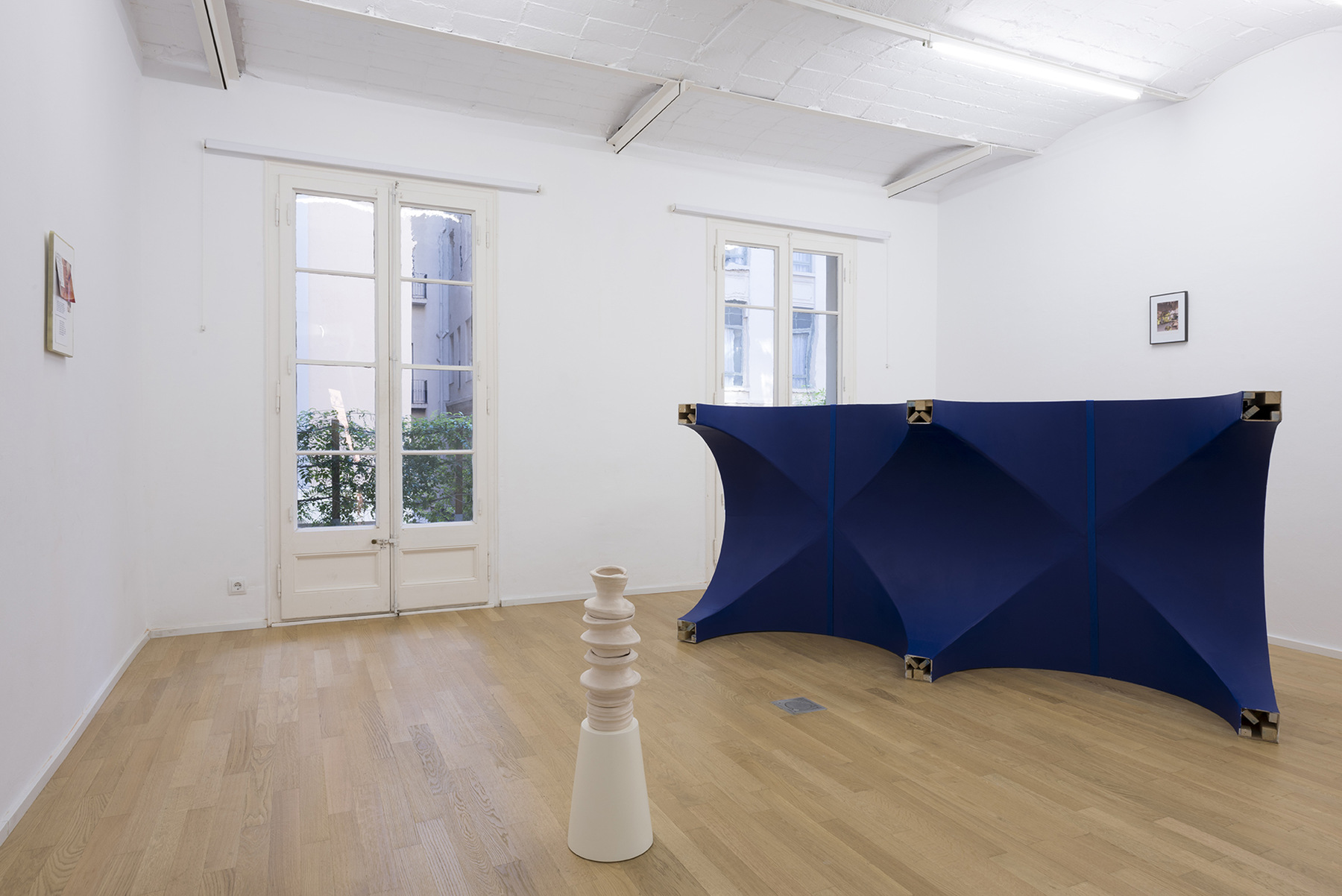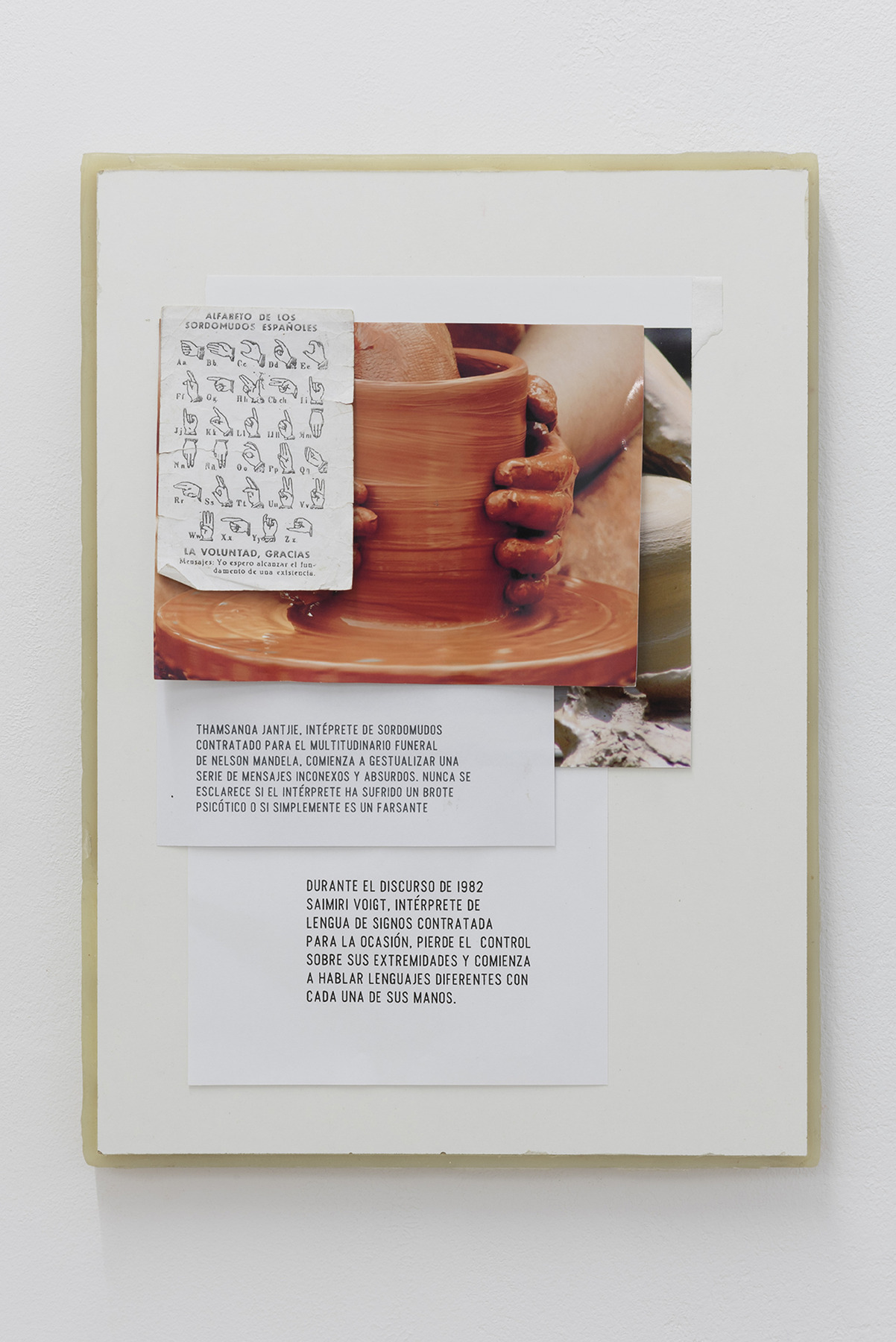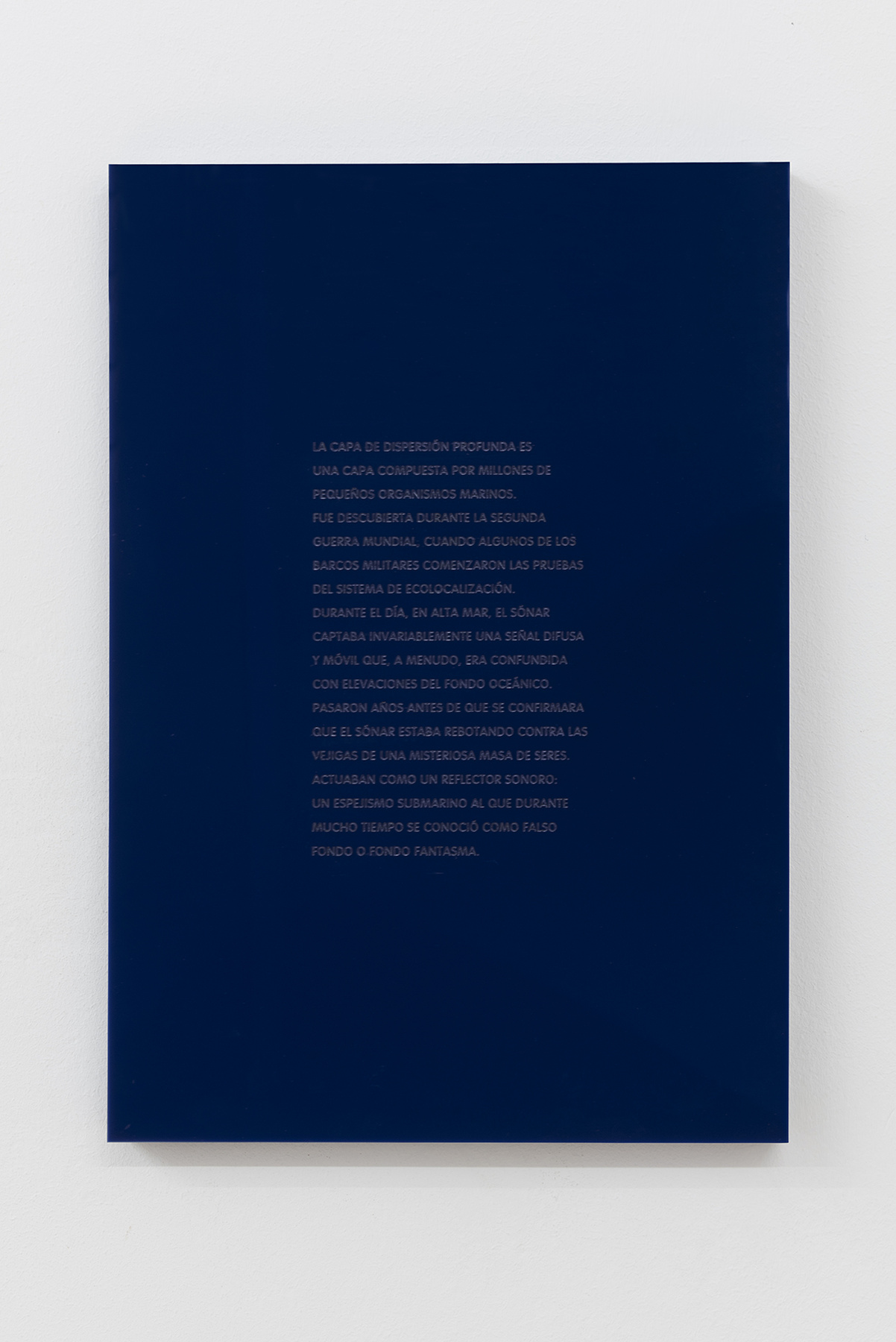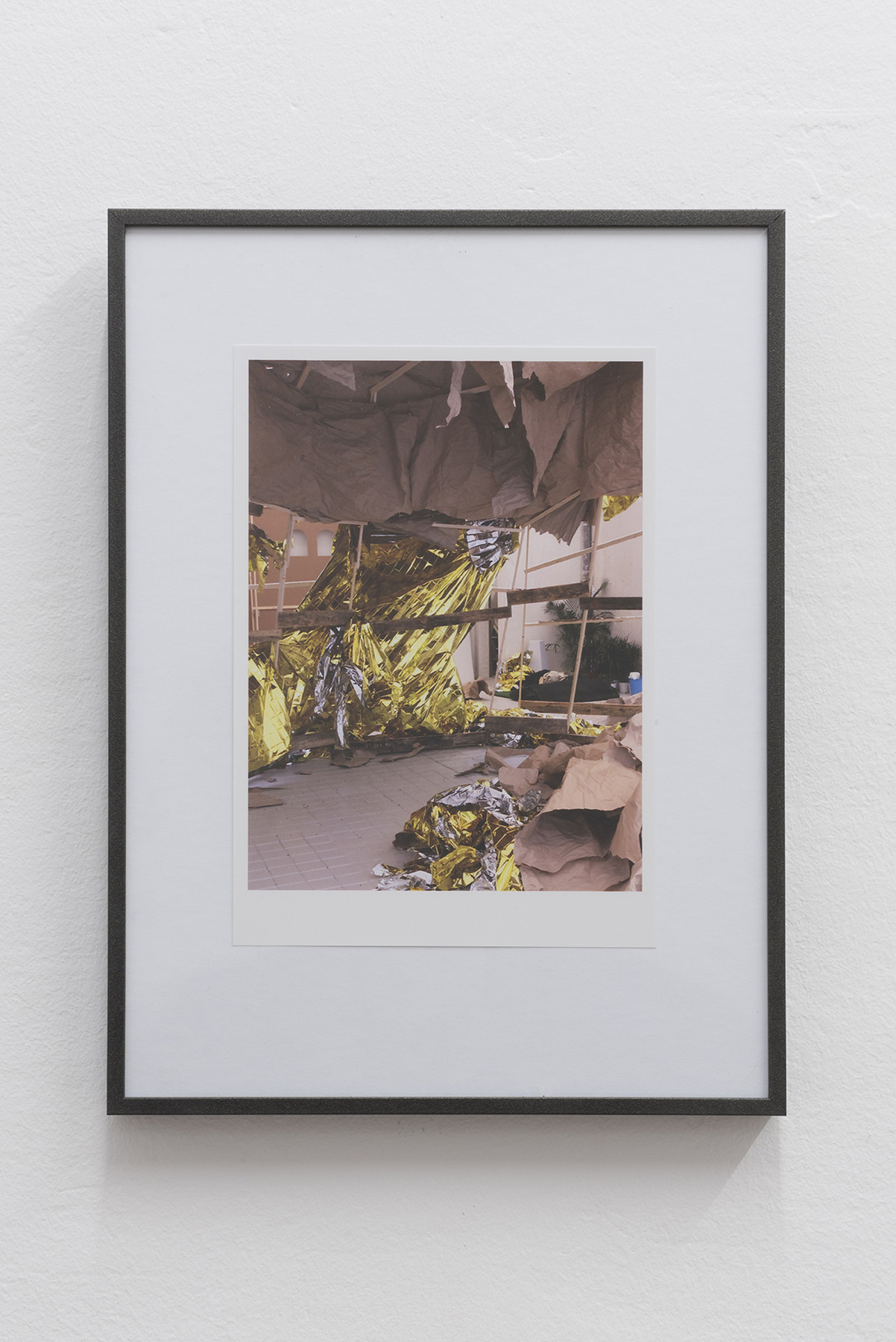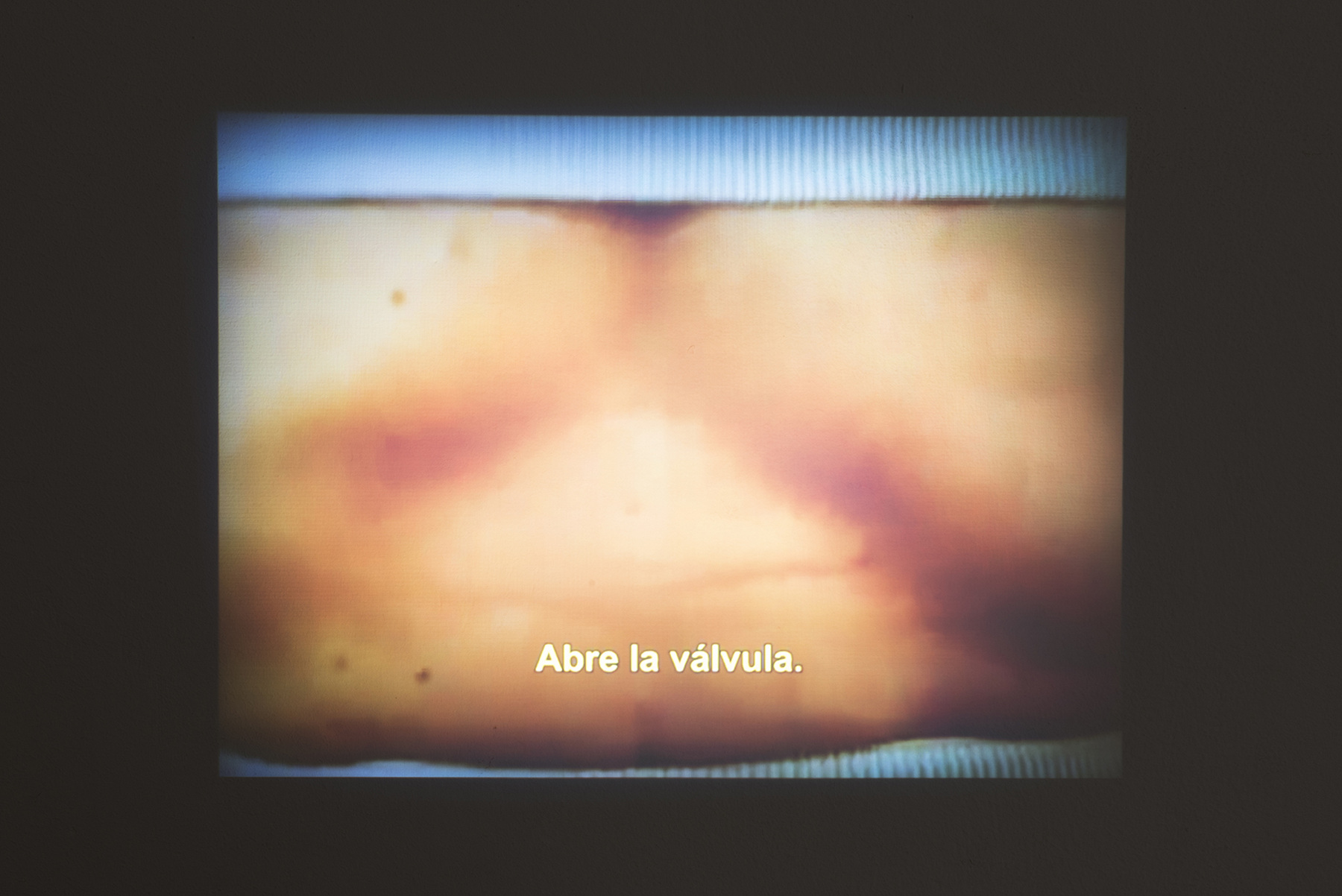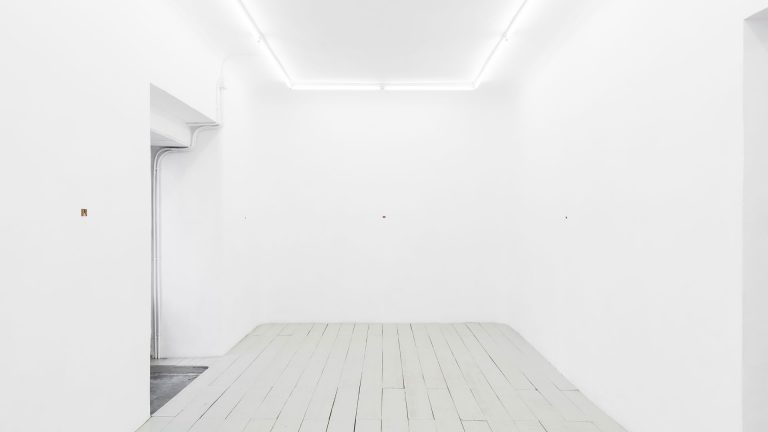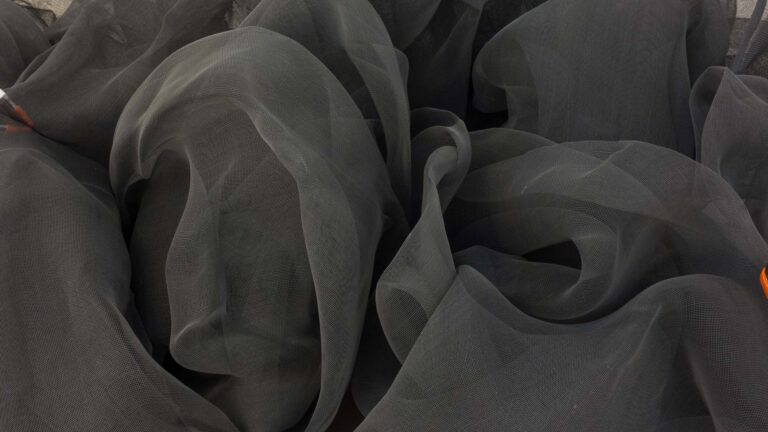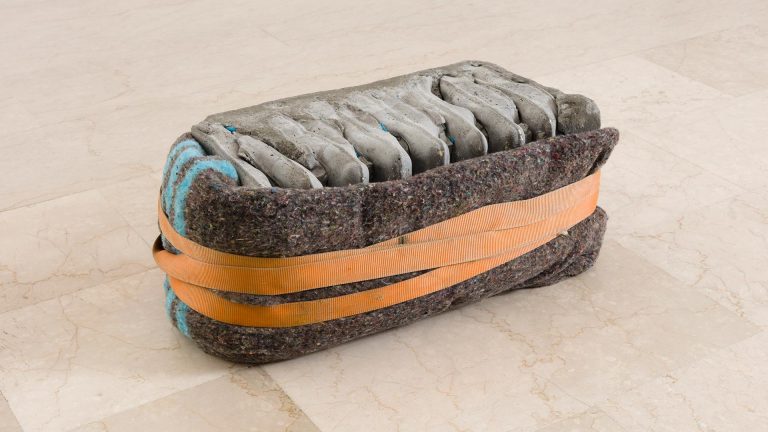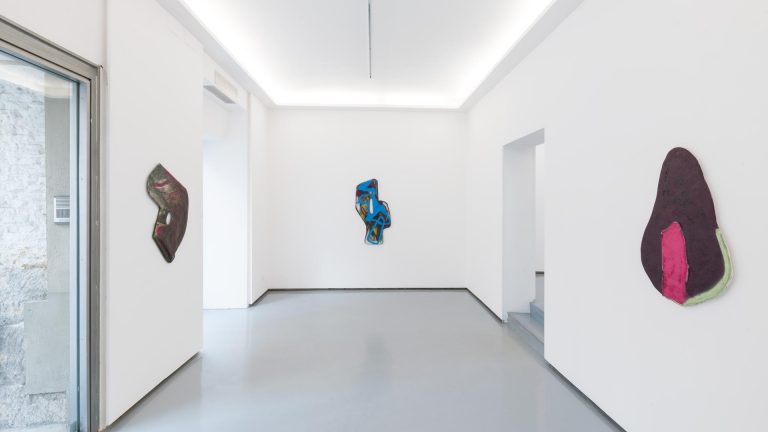Artist: Teresa Solar Abboud
Exhibition title: The night is dark enough for us to see it
Curated by: Rosa Lleó and João Laia
Venue: The Green Parrot, Barcelona, Spain
Date: September 25 – December 18, 2015
Photography: images copyright and courtesy of the artist and The Green Parrot, Barcelona
Teresa Solar Abboud’s first solo presentation in Barcelona brings together new pieces as well as elements belonging to a set of projects the artist has been recently working on, namely her new film “Al Haggara” (“The Stone”). Sculptures, set props, photography and video form a composition in which all parts are related through concepts such as loss of control and layering. The works are organised around three agents: a sign language interpreter, a free-diver and pelagic fish, figures which interconnect ideas centred around language seen as both a verbal and bodily form of knowledge and exploration.
The sign language interpreter
These pieces explore the materialisation of sign language, understanding language as an action produced through one’s hands. Its starting point was Nelson Mandela’s memorial sign language interpreter Thamsanqa Jantjie who lost control over his hands and performed an absurd language. Is our body an opaque and unknown agency within ourselves able to operate independently as in the case of Jantjie? Are the terms mind, body, language, thought and experience, diplomatic attempts to occupy material and foreign territory?
The free diver
The figure of the sea and especially that of underwater exploration are recurrent images in Solar’s practice. While space exploration is one of the paradigms of human progress, we have only mapped around 10% of our oceans, still standing as unknown territory which can be related with our limited knowledge about ourselves. Free diving is an exercise that aims to reach a limit, a record marked by a tape measure. In free immersion apnea the diver plunges using a sled that overcomes the resistance of the water and should only focus in strictly controlling their internal organs and exercising the ears preventing them to collapse, while enduring enormous pressure and pain on their bodies. The free diver sets a strict protocol with the other divers examining their jump which entails a series of precise gestures indicating the dive is proceeding well. This work analyses the story of Tanya Streeter who in 2002 broke the record of free immersion apnea in male and female categories reaching 160m depth. When she reached the 160m mark and in order to rise back to the surface, Streeter needed to unscrew an air valve which would allow her back up in full speed without effort, but due to the high pressure of the seabed and while suffering from narcosis she forgot the appropriate gesture system and how to open the valve and instead she made a gesture similar to “kissing the sea”. After a few moments of panic Streeter managed to open the valve and returned back to surface.
The deep scattering layer
The last section of the exhibition relates once more with the exploration of the sea but in this case with a more scientific approach related to the almost unknown areas of the deep oceans and the pelagic fish that inhabits them.
Teresa Solar Abboud, Night Canopy, 2015
Teresa Solar Abboud, White Noise, 2015
Teresa Solar Abboud, The Dead Hand’s System, 2015
Teresa Solar Abboud, The deep scattering layer, 2015
Teresa Solar Abboud, Untitled, 2015
Teresa Solar Abboud, Kiss to the sea, 2015
Teresa Solar Abboud, Kiss to the sea, 2015
Teresa Solar Abboud, Kiss to the sea, 2015
Teresa Solar Abboud, Kiss to the sea, 2015
Teresa Solar Abboud, Kiss to the sea, 2015


